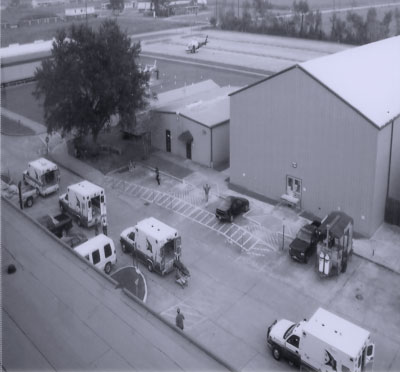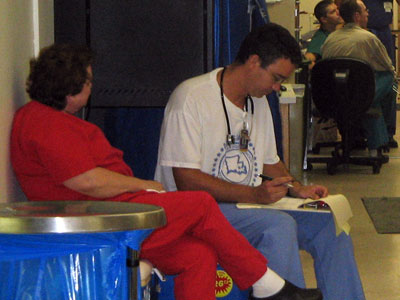
The southernmost medical center in the LSU Health Care Services Division, Leonard J. Chabert Medical Center (LJCMC) in Houma saw Hurricane Katrina roar ashore to its east and, less than a month later, Hurricane Rita to its west. LJCMC received blows from each, but exemplified the strength of an integrated hospital system.
Immediately after Katrina, LJCMC provided healthcare to the local area as well as to those who had fled the New Orleans area. Aware of the imminent need, the administration of LJCMC opened all of its beds.
Then, five days after the storm, without warning, helicopters suddenly descended onto the LJCMC campus, and ambulances rolled up to its ER, delivering 27 patients from Louis Armstrong New Orleans International Airport. They suffered from diabetic comas, dehydration, chronic kidney disease, and infections, among other conditions.
LJCMC met this sharp increase in patients with the unwavering dedication of its staff and with displaced residents and physicians from MCLNO, who resumed their duties despite their own sudden dislocation.
Nearly seventy residents and faculty from MCLNO joined with the staff of LJCMC overnight. Part of the family of LSU HCSD, all shared responsibilities without hesitation despite declining conditions in LJCMC, which was without power for more than a week.
Temperatures hovered near 100 degrees. The humidity in the operating room was nearly 100 percent, which prohibited surgery. Laboratory analysis machines were inoperable. Meals had to be shipped into the hospital. Katrina had increased the patient population by a third.

Under the strain of this constant hardship, LJCMC remained open, due to the enduring dedication of its staff.
Though Hurricane Rita ripped through southwest Louisiana a month later, far removed from LJCMC, the intense storm flooded 820 square miles of Terrebonne Parish, pushing water within a few hundred yards of LJCMC. An alligator lounged in its parking lot.
Well-versed in evacuation from its experience with Katrina, LJCMC transported patients to other HCSD hospitals statewide, including Lallie Kemp and Earl K. Long medical centers, but the emergency room remained open.
Two days later, LJCMC resumed full services, and they were in great demand.
Patient visits to the emergency room increased by 30 percent. Physicians saw conditions they hadn’t in years—water-borne diseases people contracted negotiating the ordeal of flooded homes and towns. The number of injuries, such as hand fractures, cuts, and bruises, rose as the populace tackled repairs.
More than ever, the region needed LJCMC, and LJCMC quickly expanded departments to meet the many needs of the region.